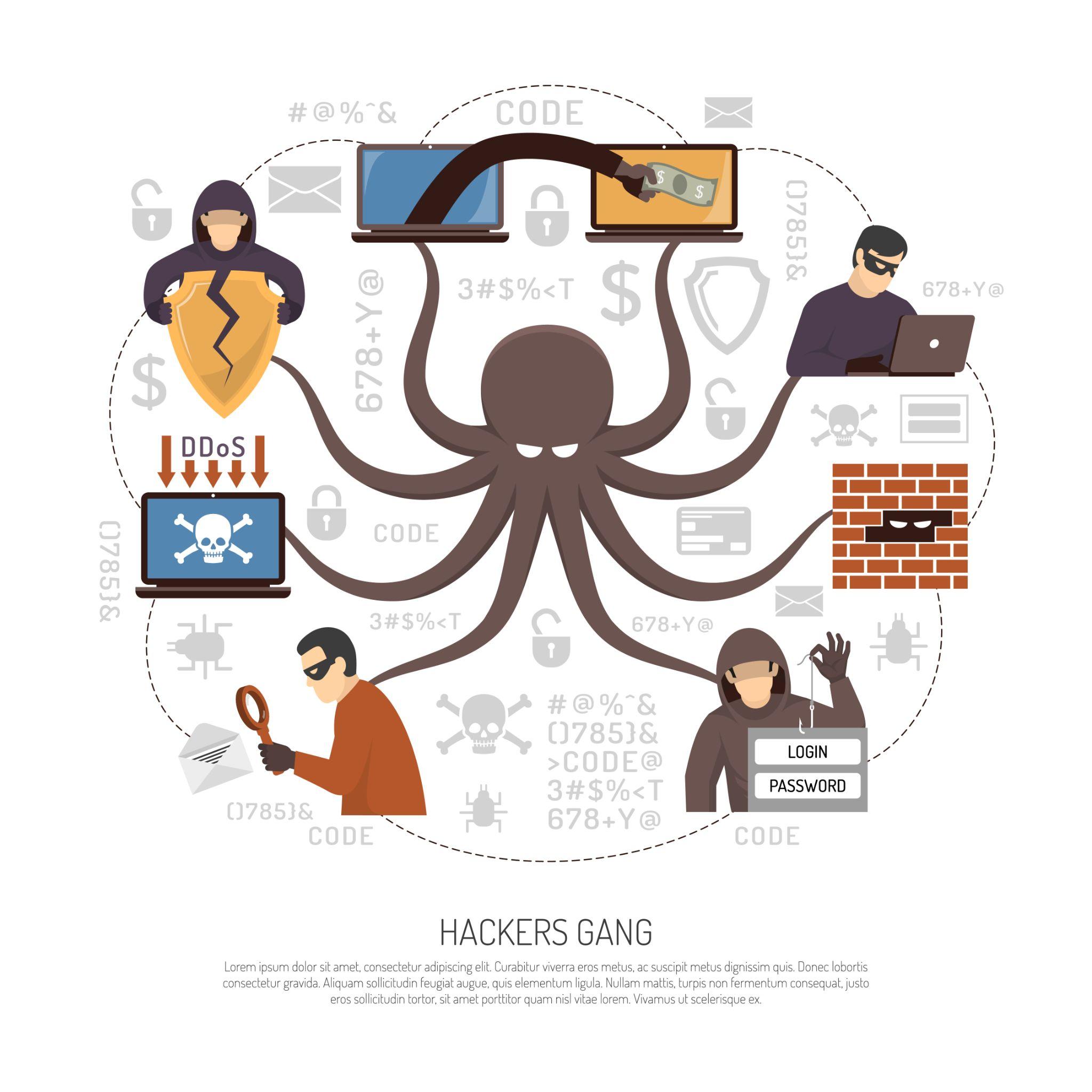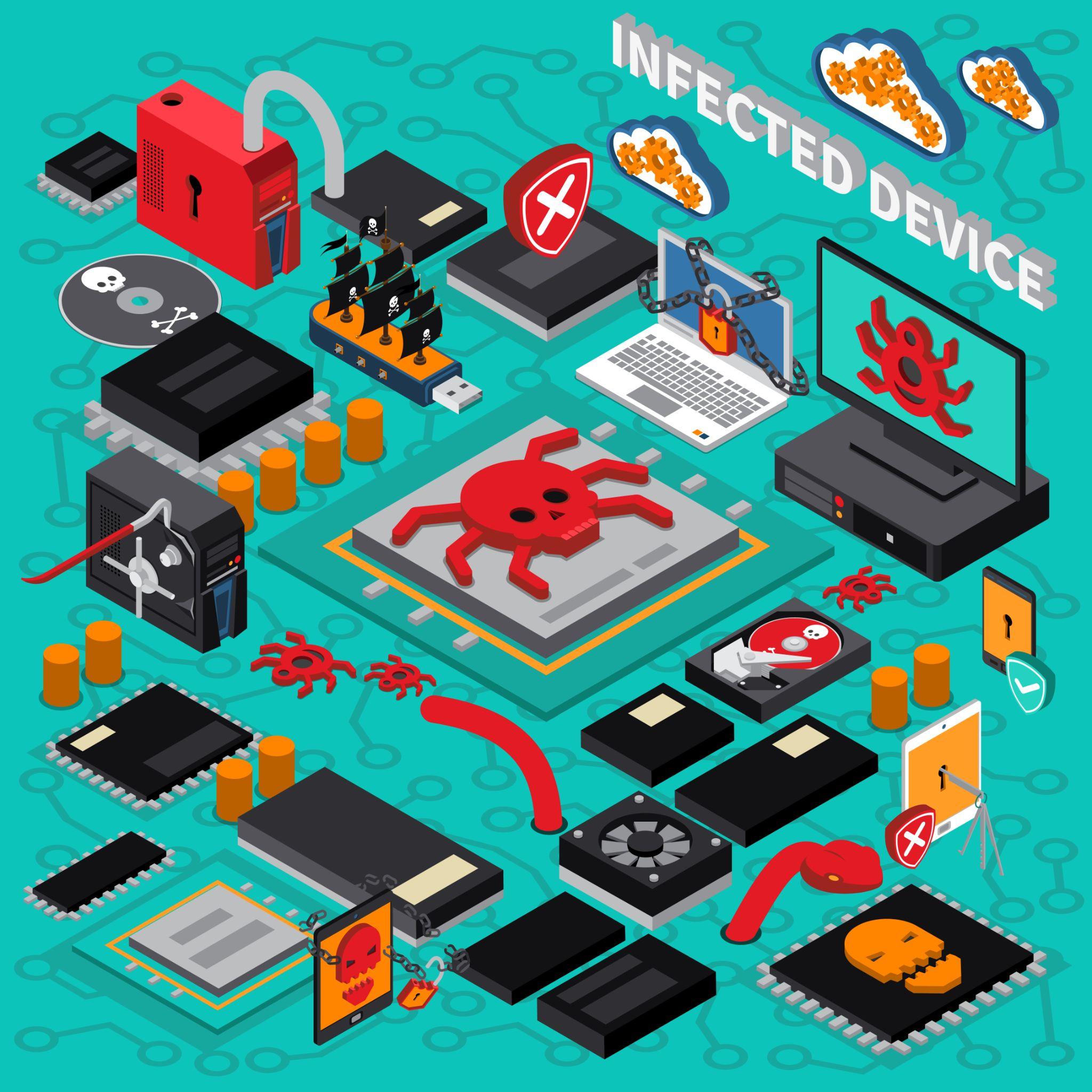As cyber-attacks continue to rise, businesses of all sizes need to be prepared to deal with the ever-evolving dangers. Businesses must be aware of the latest cyber risks on the rise before an attack occurs.
Without a cyber security strategy, your organization is vulnerable to emerging cyber threats, making it an attractive target for unscrupulous individuals or parties. The inherent and residual dangers have steadily increased in tandem with technological advancement.
In today’s increasingly connected world, emerging cyber threats pose a serious risk to businesses of all sizes. Despite this, many organisations fail to take the necessary steps to protect themselves from these dangers.
This was highlighted recently when AFS licensee RI Advice was found to have breached its licence obligations by the Court. The Court ruled that the group did not act efficiently and fairly when it failed to have adequate risk management systems in place to manage its cyber security risks.
This highlights the importance of having robust cyber security measures in place to protect your business from these growing threats. Take the time to assess your organisation’s vulnerabilities and put in place the appropriate safeguards to ensure you are prepared for the future.
Background
On Thursday, May 5, the Court decided that AFS licensee RI Advice had violated its licensing terms. The Court found that the organization had acted unfairly and inefficiently by not having sufficient risk management measures in place to control its cyber security risks.
A “significant number” of cyber incidents, including one in which “an unknown malicious agent obtained, through a brute force attack, unauthorized access to an authorized representative’s file server from December 2017 to April 2018 before being detected, resulting in the potential compromise of confidential and sensitive personal information of several thousand,” occurred at authorized representatives of RI Advice between June 2014 and May 2020, according to ASIC.
As a result, thousands of customers and other people may have compromised the sensitive and private information.
Her honour Justice Rofe emphasized that all licensees should prioritize cyber security when passing judgment.
KEY ISSUES WITH RI ADVICE GROUP
- Computer systems did not have up to date antivirus software installed and operating,
- No filtering or quarantining of emails,
- No backup systems in place, or back ups not being performed, and
- Poor password practices including sharing of passwords between employees, use of default passwords, passwords and other security details being held in easily accessible places or being known by third parties.

The Rise in Cyber Threats
Cyberattacks are growing more common, targeted, and sophisticated. An organization’s average cost of cybercrime grew by $1.4 million last year, to $13.0 million, according to Accenture and the Ponemon Institute’s Ninth Annual Cost of Cybercrime Study.
The average number of data security risks and breaches also jumped by 11%, to 145, according to the same study.
Since data theft is the most costly and fastest-growing part of cybercrime today, criminals are increasingly focusing on the data kept by organizations.
As a result, more and more firms are putting sensitive data in the cloud, which increases the risk of it being compromised. A number of criminals aren’t just interested in stealing; they also want to alter or ruin the environment.
Reasons Behind The Rise In Emerging Cyber Threats
One of Accenture Security’s newest worldwide incident response analyses for the first half in 2021 discovered that the amount of intrusions increased by three, occasionally known patterns in the three-digit triple digits.
The following are the reasons pertaining to cyber crime:
Impact of Emerging Cyber Threats on Businesses
According to a recent study, nearly one-third of small businesses don’t take any preventive measures to guard against online dangers. The majority of these companies don’t even keep a budget in place to address such a threat.
Organizations that can educate individuals about cybersecurity is the biggest need of the hour. The help will come from providing adequate resources and education. Resources refer to organizing cost-sharing cooperative, affordable training sessions that must be targeted at the most recent and emerging risks and how to counter them using the most recent and enhanced online tools.
The consequences of ignoring cyber security will have the following impact on businesses:
Insider Threats
Insider threats to security are more difficult to prevent for a number of reasons, one of which is that insiders – employees, contractors, vendors etc. – doesn’t always threaten the company’s data security intentionally.
In fact, many data breaches resulting from insider threats are completely unintentional; the individual may not be aware that they’re breaching security protocol or may not understand the importance of following said protocol.
Furthermore, even when an insider does act maliciously, it can be difficult to detect their intentions in advance; insiders already have legitimate access to the company’s systems and data, so their activity may not trigger any alarms. As a result, preventing insider threats requires a multi-faceted approach that includes educating employees on security protocol and monitoring activity for red flags.
Outsider Threats
Outsider threats to security usually comprise of attackers looking to compromise legitimate websites in order to deliver malicious payloads, which can then reach and infect data.
The most common method for attackers to do this is through phishing emails, which trick users into clicking on a link that leads to a malicious website. Once the user is on the website, the attacker can then exploit vulnerabilities in order to implant malware onto the user’s device.
This can have serious consequences for both individuals and businesses, as sensitive data can be stolen and used for nefarious purposes. As such, it is essential that everyone is aware of the dangers of phishing emails and knows how to spot them.
By being vigilant and taking steps to protect oneself, one can help to protect against outsider threats to security.
The Economic Costs of Emerging Cyber Threats
The term “cybercrime” covers a wide range of activities, from identity theft to fraud to outright sabotage. And the costs of these activities are significant, both in terms of the direct financial losses incurred and the indirect costs associated with damage to reputation and productivity.
A recent report by The Economist Intelligence Unit estimates that the annual cost of cybercrime globally is $445 billion. And that’s just the direct financial cost; when you factor in the indirect costs, the total comes to a staggering $575 billion. The report also estimates that the cost of cybercrime will continue to rise, reaching $1.2 trillion by 2021.
The second-most costly type of cybercrime is fraud, which includes everything from phishing schemes to fake invoices and bogus investment opportunities. This type of cybercrime cost businesses and individuals $190 billion in 2017.
The third-largest category of cybercrime is data breaches, which can result in the loss or theft of sensitive information such as customer data or trade secrets. These breaches can also lead to regulatory fines and other compliance-related costs.
Businesses who have been the target of a cyber attacks on the rise also have to pay for the networks, devices, and damaged systems to be repaired.
How Reputational Damage from a Data Breach Affects Consumer Perception
While organizations are working hard to protect their data, cyber criminals are becoming more sophisticated in their attacks. As a result, data breaches can have a significant impact on an organization’s reputation.
Reputational damage can occur when sensitive information is leaked, when customer trust is violated, or when the organization is seen as being irresponsible with data. This damage can have a lasting effect on an organization’s image and can be difficult to recover from. In some cases, it can even lead to loss of customers and revenue.
When consumers perceive an organization as being untrustworthy or irresponsible, they are less likely to do business with that organization.
They may also warn others about the company, leading to further reputational damage. In some cases, reputational damage from a data breach can be so severe that it leads to the demise of the organization.
For these reasons, it is essential for organizations to do everything they can to protect their image and reputation in the wake of a data breach.
Legal Consequence of a Cyber Attack
In the event of a data breach, your enterprise will be held legally responsible if the data that was compromised included personally identifiable information (PII) or personal health information (PHI). In order to avoid being held liable, you must take reasonable measures to protect this type of data. This includes encrypting the data, maintaining secure backups, and having a comprehensive incident response plan in place.
While these measures will not guarantee that your data will never be compromised, they will help to mitigate the legal risk associated with a data breach. As such, it is essential that you implement these measures if you collect and store digital consumer data.

Latest Emerging Cybersecurity Threats in 2022
1. Viruses
Computer viruses are nefarious pieces of code that harm your device and can spread to other hosts by replicating themselves. Similar to how flu viruses require a host to reproduce, computer viruses also require a host file or document to spread.
One of the most prevalent and active computer viruses, the GoBrut virus releases new variants on a regular basis. GoBrut is a simple password cracker that may sluggishly utilize brute force assaults to break your credentials.
2. Worms
Worms are a type of self-contained malware that spread by themselves through other files and programs. Worms are autonomous programs that may “wiggle” over your network, as opposed to viruses, which require a host.
Mydoom, often referred to as Novarg, is thought to be the most destructive and quickly proliferating computer malware ever. It was distributed via bulk emails and cost $38 billion ($52 billion after inflation) in damages.
It still exists today and produces 1% of all phishing emails.
3. Spyware
Spyware is a sort of spyware that is installed to gather data on users, such as their system or browsing patterns. Spyware comes in a variety of forms, so be cautious.
When you fill out a form on a website, your personal information is at risk. Keyloggers monitor your keystrokes to capture critical information.
Journalists in 2021 came across Pegasus, a sophisticated spyware program that targets iOS and Android handsets. Pegasus has the ability to read text messages, monitor calls, gather passwords, and even track locations.
4. Adware
Adware causes unwanted adverts to appear on your computer. It may also alter the homepage of your browser or even include spyware such as malicious plugins.
You still need to uninstall adware from your computer even though it isn’t nearly a virus and isn’t as harmful as other online malware. In addition to being annoying, it might also lead to future problems with other devices.
5. Zero-Day Attacks
Websites with recently identified security vulnerabilities can experience zero-day attacks.
Stuxnet: This harmful computer worm targeted machines in Iran, India, and Indonesia that were utilized for manufacturing. Iran’s uranium enrichment facilities were the main target in an effort to thwart the nation’s nuclear program. The programmable logic controllers (PLCs), which are industrial computers with Microsoft Windows operating systems, had the zero-day vulnerabilities.
6. Malware
The phrase “malware,” which combines the words “malicious” and “software,” is used to describe software that harms networks, computers, websites, and web servers.
The threat posed by malware is not new, but hackers are continuously profiting from innovative techniques. Viruses, spyware, trojans, and ransomware are all included in this.
Malware can prevent users from accessing your network, steal vital information in the background, and even endanger your machine once it has been installed.
7. Ransomware
Ransomware is a type of malware that is used to extort money from victims. Hackers stop users from accessing data and threaten to publish or delete it unless a ransom is paid.
On February 3, 2022, a ransomware attack targeted airport operator Swissport, which caused planes to be grounded and flight delays at Zurich International Airport.
22 flights were delayed as a result of the attack on Swissport, which conducts air freight operations and offers ground services. Most important systems seem to have been unharmed, and Swissport was able to quickly contain the ransomware threat.
8. DDoS
A DDoS attack, also known as a distributed denial of service attack, is an internet service attack that is regrettably remarkably simple to launch and difficult to defend against if your cybersecurity team lacks adequate DDoS protection technologies.
Amazon Web Services was attacked with a DDoS in February 2020. This massive DDoS assault targeted an undisclosed AWS client utilizing CLDAP reflection. This approach multiplies the quantity of data delivered to the victim’s IP address 56 to 70 times. The three-day attack reached 2.3 gigabytes per second.
9. Fileless Attacks
Malicious software that leverages trustworthy apps to infect a computer is known as fileless malware. It is difficult to detect and get rid of because it does not rely on files and leaves no traces. Modern adversaries build increasingly sophisticated, tailored malware to get past security because they are aware of the tactics businesses employ to try to stop their attacks.
The Dark Avenger, Number of the Beast, and Frodo were all early examples of this kind of spyware. The Democratic National Committee hack and the Equifax data security risks are two more recent, well-known fileless attacks.
10. Cloud Infrastructure Attacks
A cloud cyber attack is a cyber attack on the rise that targets off-site service providers that use their cloud infrastructure to provide hosting, computing, or storage services. Attacks on service platforms using SaaS, IaaS, and PaaS service delivery paradigms are examples of this.
One of the more ironic cloud data breaches of 2020, the Keepnet Labs data breach involved a leaky ElasticSearch database that contained entries that were previously exposed by various data breaches across the globe. The database included two data collections containing 5 billion and 15 million entries respectively.
How Businesses Can Reduce Cyber Security Threats
● Limit Employee Access to Your Data & Information
By restricting access, you can lessen the likelihood of human mistake, which poses the biggest threat to information security. Only the systems and particular data that employees require in order to do their duties should be accessible to them.
● Install Surge Protectors & Uninterruptible Power Supplies
Uninterruptible power supply (UPS) can provide you with enough battery life and time to save your data in the case of a power outage. Verify that the size and kind of UPS fulfill the criteria and requirements of your business.
A UPS should be connected to each computer and networked device. Standard surge protectors ought to be sufficient for less delicate devices and non-networked equipment.
● Regularly Patch OS and Software
If you don’t periodically patch and update every piece of software on every device your staff use, any new app could be a breeding ground for data security risk and invite a cyber attack.
When installing new software or buying a new computer, always check for updates. It should be noted that software developers are not compelled to offer security updates for unsupported products.
● Install & Activate Software and Hardware Firewalls
Malicious hackers can be thwarted by firewalls, and they can also prevent employees from visiting undesirable websites. Every computer, smartphone, and networked device used by employees should have firewall software installed and updated.
● Use Encryption For Business Data
To safeguard all of your PCs, tablets, and cellphones, use full-disk encryption. Separate from your backups, keep a copy of your encryption password or key in a safe place.
In order to decrypt an email, receivers normally need the same encryption capability. Never email an encrypted document along with the password or key. Give it to them over the phone or in another way.
Key Actions to Take Post-RI Court Judgement
- Cybersecurity risk is a significant and growing risk for financial institutions around the world. As more and more transactions are conducted online, the chances of a cyberattack increase. Financial institutions are particularly vulnerable to cyberattacks because they hold large amounts of sensitive customer data. If this data is compromised, it could lead to serious financial losses for the institution and its customers. In addition, cyberattacks can disrupt financial services and damage an institution’s reputation. As a result, it is essential for financial institutions to have robust cybersecurity systems in place to protect themselves against this growing threat.
- While the number of reported attacks may seem relatively small, experts warn that this is only a fraction of the total number of incidents that occur each day. In fact, many attacks go undetected, either because they are not large enough to be noticed or because they exploit vulnerabilities that have not yet been discovered. When these attacks are considered cumulatively, it becomes clear that our current cybersecurity systems and processes are inadequate. This is particularly concerning given the sensitive nature of the data that is often stored on digital systems.
- The disclosure of a data breach can have a significant impact on an organisation, its customers and other stakeholders. It is therefore essential that companies manage risk adequately by taking prompt and effective action to investigate, monitor and improve identified breaches. Delays in taking these steps can compound the damage caused by the breach and lead to further reputational damage and financial losses. In addition, delays in addressing a data breach can result in regulatory fines and other penalties.
- Given the potential consequences of a data breach, it is essential that organisations have robust systems and processes in place to ensure that they quickly identify and remediate any security vulnerabilities.
How Jumpstart Cybersecurity Protects Your Business Against Cyber-Threats
An executive leadership-driven end-to-end cyber risk strategy is essential for a business to innovate, utilize new technologies, and grow securely.
With regard to strategic objectives and the organization’s tolerance for risk, Jumpstart Security’s services strike a balance between the need to be secure, vigilant, and resilient.
In an age where cyberspace is pervasive, we assist in creating an achievable roadmap and governance architecture to support security needs and avoid emerging cyber security threats.
3 Reasons Why You Should Choose Jumpstart as Your Data Security Solution
The global market’s growing connectivity and increased usage of technology are two major factors influencing cyber risk. However, they can also be effective tools that propel a business ahead if used properly such as:
- Cyber strategy, transformation, and assessments – We collaborate with customers to ascertain their level of comfort with risk as well as to pinpoint their main business risks and cyber-threat exposures.
- Cyber risk management and compliance- In order to prevent possible emerging cyber threats to mission-critical data and systems, we provide executives with the tools to identify, assess, and address third-party and regulatory compliance risks brought on by the emergence of new, sophisticated distributed networks.
- Cyber training, education, and awareness – To hasten the change in behavior, we help firms create and implement a well-defined cyber risk culture and educate employees about potential threats.

